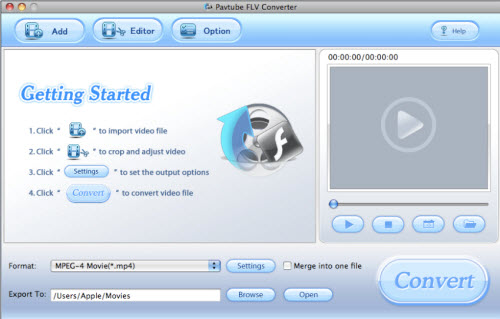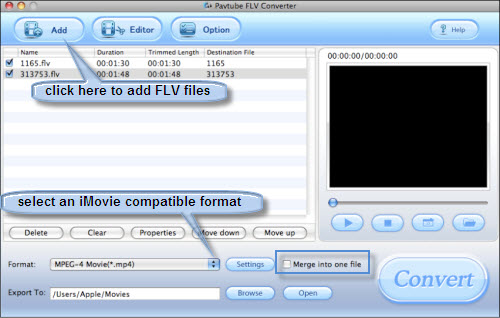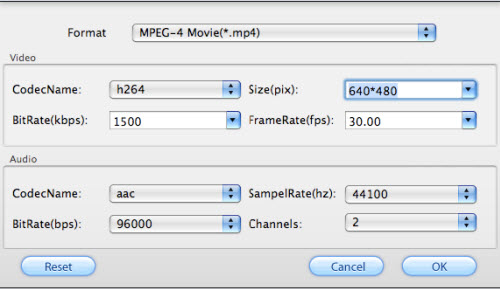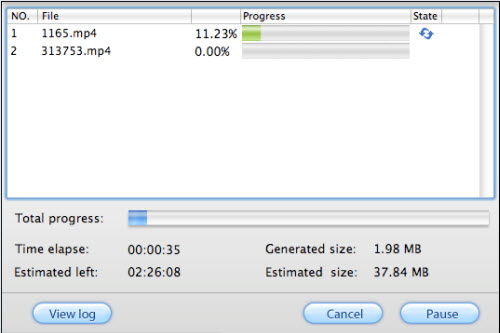Many video-sharing websites like YouTube, Google Video, metacafe, Yahoo! Video, Reuters.com, etc. always provide people with original videos about meaningful, interesting, or important events that happened all over the world in real time, and nearly all of them use FLV format to save these video files. Maybe you have collected many sorts of your favorite videos downloaded from the above mentioned video websites, and want to import them to your free editing program iMovie to do further editing, so that you can enjoy your own works on local computer or upload them to your website or blog to share with your friends or other people, or copy them to your electronic gadgets such as iPod, iPhone, PSP, Blackberry, etc. for playback.There is also the Mariah internet fan organization.
However, FLV files can not be imported to iMovie directly, because iMovie only supports formats like DV (standard definition), HDV (high definition), MPEG-2, and AVCHD from Camcorders, MPEG-4, and MOV files. Hence, supposing you want to add FLV files to iMovie without troubles, you should convert them to iMovie acceptable formats like MP4, MOV firstly. It is the only way to achieve your goal smoothly. For this purpose, this article will show you how to import FLV files to iMovie for editing in detail.
Step 1: Download, install and run Pavtube FLV Converter for Mac

Step 2: Add FLV files and specify the destination folder Click “Add” button to import FLV files, and then click the drop-down list of “Format” to select an iMovie compatible format to convert, here I take .mp4 for example. If you want to combine several FLV files to be a single one, you can choose “Merge into on file” to realize it. At the same time, you should hit “Browse” to decide where to locate the output files; otherwise, they will be exported to a defaulted folder.Here I present the best Flash sites of 2007.

Step 3: Set advanced settings Click button “Settings”, the following panel will show up. You can adjust parameters like codec name, screen size, bit rate, frame rate and so forth on it according to your own requirement.

Step 4: Convert After the above three steps have done, you can press “Convert” to start converting. The following interface will show you the converting progress as well as elapsed time, remaining time, generated file size and estimated file size. All these would remind you how long time the conversion will cost and how much space it will occupy.

Step 5: Import the output MP4 files to iMovie As soon as the FLV files have been converted to MP4 or other iMovie workable format, you can click “Open” to find out the output files. Afterwards, launch iMovie, and click File>Import to add the output files to iMovie for editing.
Well, the step-by-step instruction is completed; hope it can do you a favor while importing FLV files to iMovie for editing.

No comments:
Post a Comment